Blog

10 Things no one ever tells you about tiny homes
Tiny houses are popular for a variety of reasons, including being environmentally friendly and anti-consumerist, as well as providing an inexpensive road to homeownership. However, after the tiny house movement if you’re thinking of buying a little house, make sure you look at these issues beforehand.
While more mobility is one of the advantages of owning a tiny house, the absence of a fixed address is a disadvantage. You won’t have a valid postal address until you register your residence on a proper property.
While perusing the internet, you may go beyond a dozen shining little houses that make you want to pack your belongings and move into one of your own. So, when you do something, think about the following facts regarding living in a little house.
So, while you might be able to describe how to go to your house to a pizza delivery person using nearby landmarks, you won’t be able to purchase online or even get mail at your house.
Here are some things that no one ever tells you about tiny homes.
What is preventing a lot of people from relocating to tiny homes?
A few hundred square feet may appear to be a lot, but all it takes is a day to understand it’s nothing. All your rooms, including your bedroom, bathroom, living room, and kitchen, are in one location. If you require a lot of separation between tiny spaces, it might not be the lifestyle for you. You’ll be showering mere feet from where you make your food.
Tiny house existence, on the other hand, allows you to multitask without having to rush from one area to the next. In reality, jogging from room to room in a compact house is very difficult due to the lack of space (and, in most cases, no place to work out).
Some claim this is due to roadblocks such as restricted planning rules, financial issues, and securing access to the property. This is one of the reasons why some people want to live outside of town. While being so far from the city might be irritating, the problem is more serious.
Many individuals forsake their little dwellings due to the solitude they experience. They are separated from their friends and relatives. This makes it tough to meet up with them on a regular basis unless you make it a priority.
1. It is necessary to consider security.
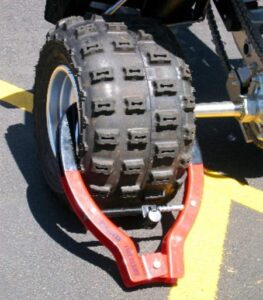
A tiny house, unlike standard residences, can be snatched, so you’ll have to go beyond the locks on the doors and windows. To dissuade burglars, use wheel locks or house blocks to secure your own home to the ground, and install security cameras and tracking devices as well.
Whether you believe it or not, stealing is a problem for individuals who own portable houses in the small home community. Thieves may physically drive up to an empty house, attach it to a truck, and drive away with all of the owner’s belongings in tow, never to be shown again. In several of these cases, the house was in full sight of the road, attracting unwelcome attention from curious pedestrians and burglars.
With this in mind, we propose locating your small house away from high-traffic areas, maybe surrounded by vegetation or trees. While doing so does not guarantee that your home will not be taken, it does reduce the likelihood that someone with nefarious intents would notice it, according to the site.
There are a few more strategies that small households might use to resist theft. We suggest that you do the following:
- To prevent a possible burglar from unhitching your small home from your car, use a hitch lock.
- To stop the trailer from rolling forward or backward, pile bricks or cinder blocks next to each wheel and use a wheel lock on at minimum one wheel.
- Use a heavy-duty chain to secure your vehicle to a tree and other support.
2. Property and zoning laws are not the same.
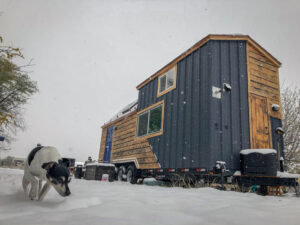
Because many zoning restrictions haven’t captured with the small home craze, you might want to consider renting rather than owning land. The American Tiny House Association is the best place to go for the most up-to-date zoning data and building codes.
Some cities or neighborhoods may have construction rules that govern the minimum size of a residence. In this case, a little house may not be permitted to be built. Some jurisdictions categorize movable tiny homes real estate as RVs, while others may consider them as true houses and you can keep them in RV parks. When you choose this lifestyle, you’ll need to check all zoning rules and administrative requirements to guarantee you’re maintaining compliance.
3. Some of them don’t get insurance.

A small dwelling, unlike a typical home, cannot be insured.
You’ll need to choose a tiny homeowners insurance coverage because a tiny home isn’t a standard housing building.
Having such a coverage protects the home and its contents from both natural disasters and theft. Insurance companies often consider small stationary homes, which are firmly tied to a base on a plot of ground, to be equivalent to standard single-family homes. It will be simpler for them to obtain coverage as a result of this.
Tiny home dwellers live in small transportable houses on a mobile trailer may confront a more difficult situation. You may receive recreational vehicle insurance coverage comparable to an auto policy if your small home on tires is registered as a certified RV. Collision, content protection, and liability coverage are all included.
The downside with this sort of coverage is that many insurers will not cover somebody who lives in the home full-time, according to the website. In addition, most RV insurance policies only cover certified RVs built by manufacturers that have been licensed by the Recreational Vehicle Industry Association (RVIA). The cost of construction, its locality, the insurance you choose, and the deductible might range from $400 to $1,500 every year.
4. Smells and noises from your household will occur frequently.
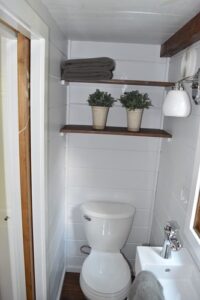
How can people who live in tiny houses get rid of odors? ” You don’t have anywhere to flee to. You have no choice except to walk three feet to the opposite end of the house and pray.
It’s nearly impossible to avoid odors — pleasant or bad – in a Small Space.
It’s easy to get overwhelmed by a single fragrant candle. Although opening the windows helps, some scents, like burnt toast or a campfire, may linger for days on my curtains, clothes, and linens.
It’s a cramped quarter. If such items make you feel uneasy, listen to music, switch on a fan, or light a candle. But, honestly, it’s preferable to just be at ease with your housemate’s bodily processes.
5. Privacy is a concern.
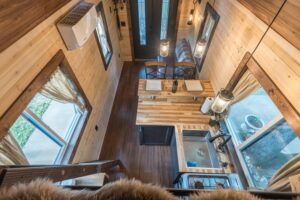
Now it’s time to get down to business. There aren’t many places to go before being alone in a small house. Your bathroom, your bedroom, and perhaps some outside area. This is where you’ll most likely find some alone time. And, if you really need to isolate yourself for longer than a few minutes, areas like the restroom aren’t ideal.
There are solutions to deal with privacy concerns, like getting a second loft or a toilet with a closed door. Yet, because there is so little room in this style of the house, there is no way to avoid the concerns about privacy when you share it with someone. Moreover, you will not be able to enjoy your tv shows alone.
If you love throwing dinner parties or summer barbeques for your family and friends, be prepared to drastically reduce your guest list once you relocate into a compact house. When you have a tiny home living space, you have less room to host visitors.
Rather than having ten friends around for cheese and wine on a Saturday evening, you might only be able to place four to six guests safely.
6. Heavy Storms may be dangerous.
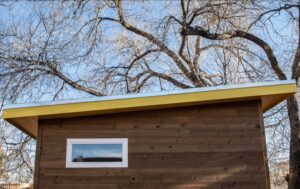
A tiny house design should be durable and long-lasting, as well as well-insulated to withstand extreme heat and cold and severe weather. Many engineers and architects, however, have risen to the occasion, constructing small dwellings that can endure hurricanes.
Rainstorms and floods are the most prevalent causes of damage to all types of dwellings, even tiny ones. Flooding, electrical loss, timber damage, and even fissures in a home’s core structure can all be caused by heavy rain.
Tornadoes and hurricanes may smash windows, and doors, topple roofs and trees and cause structural damage in areas where they are prevalent. Tiny houses on wheels are at risk of being pushed down as well! Hurricanes are known for destroying even larger buildings, so little houses are especially vulnerable.
7. Maintenance may be time-consuming and expensive.
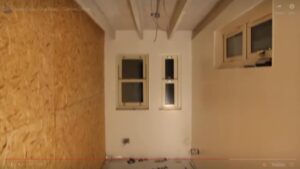
While small dwellings are inexpensive to create, they may be costly to maintain. The fundamental upkeep demands for your tiny house will be comparable to those for a standard-sized home. Your heating and cooling appliances, like those in a traditional home, will require regular maintenance. This might help you prevent severe problems when the weather gets too hot.
Check for leaks in the region’s all-around windows and doors. Finding and repairing leaks early on can help you save a lot of money on your energy bills.
Maintain all of your appliances, especially your water heater, drainage, and stone, on a regular basis.
You’ll need specialized equipment and furniture for a compact house, which will cost extra to fix and maintain. Make a maintenance and repair budget, and keep in mind that tiny dwellings sometimes require bespoke sizing and specialized knowledge, which may be pricey.
8. It’ll be messy!

Clutter is another concern with a little dwelling. Despite Pinterest’s meticulously arranged small house ideas, a tiny house is just as prone to clutter as a regular one.
In fact, if only one object is out of place, it may appear cluttered faster.
Keep your little house tidy at all times to avoid getting swamped by clutter. Keeping dishes heaped in the kitchen sink or missing to fold a large load of laundry exactly after getting it out of the dryer may create havoc in an already cramped living space. Investing in storage bins that slip neatly into a closet or below a table or bed may hopefully maintain things orderly without contributing to the mess.
9. Internet and other creature comforts can be hard to satisfy.

Internet and other creature comforts may not be accessible all of the time. While Elon Musk is trying to set-up internet for the world, if you’re a blogger or want to work remotely, extremely isolated places in the middle of nowhere may not provide the type of wireless infrastructure you need to work.
Also, unless you have a satellite phone or satellite router, you may struggle to even have connection to the outside world. This is mostly for extreme cases of isolationism, must internet companies in North America can provide support to the most rural of communities. Be warned that storms, cloud coverage and even wind can cause discrepancies in coverage.
10. Resources are definitely finite.
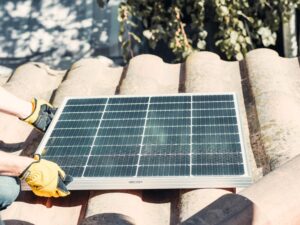
When you have a tiny home, especially off-grid – you’re living a sustainable life. While you’re leaving a smaller carbon footprint and trying to provide a better world for future generations, you’re also limited on resources and what you can and can’t do.
Want to watch TV or play Xbox? Probably out of the question, both of those things use a tremendous amount of electricity. Like to play electric guitar, forget the electric amp. Want to curl your hair or straighten it? Better anti-frizz shampoo instead. Space-heaters? You will need to buy a specialized one to make it work well for you!
Electricity, water, fuel and even time will be limited since you’re now off-grid. Life has gotten a little more harder since you need to ration things you may have taken for granted.
Final Thoughts On Tiny House Living
It isn’t simply about getting rid of things. It’s not just putting your house on the back of your vehicle and driving it around. Living in a little house is a whole different experience.
You’ll enjoy more time with your family and friends, participate in more outdoor recreation, and become more friendly with your neighbors.
You should also be aware that a small home‘s design costs higher per square foot home than just a full-sized house since it is more difficult to construct in certain respects. In addition, far higher quality components in floor plans are used for major development houses than standard, mass-purchased components.
If you’re planning to relocate into your first tiny house, keep in mind that the majority of your stuff won’t fit. A key concern that no one can escape while living in a little house is downsizing and the lack of storage space. Because of the limited footprint of the bathroom, toilets in compact dwellings can be placed immediately beneath the shower head.
Whether you are in love with a luxury lifestyle or want to try a tiny house living for a vacation, just talk to your nearby tiny house builder to get the necessary facilities.